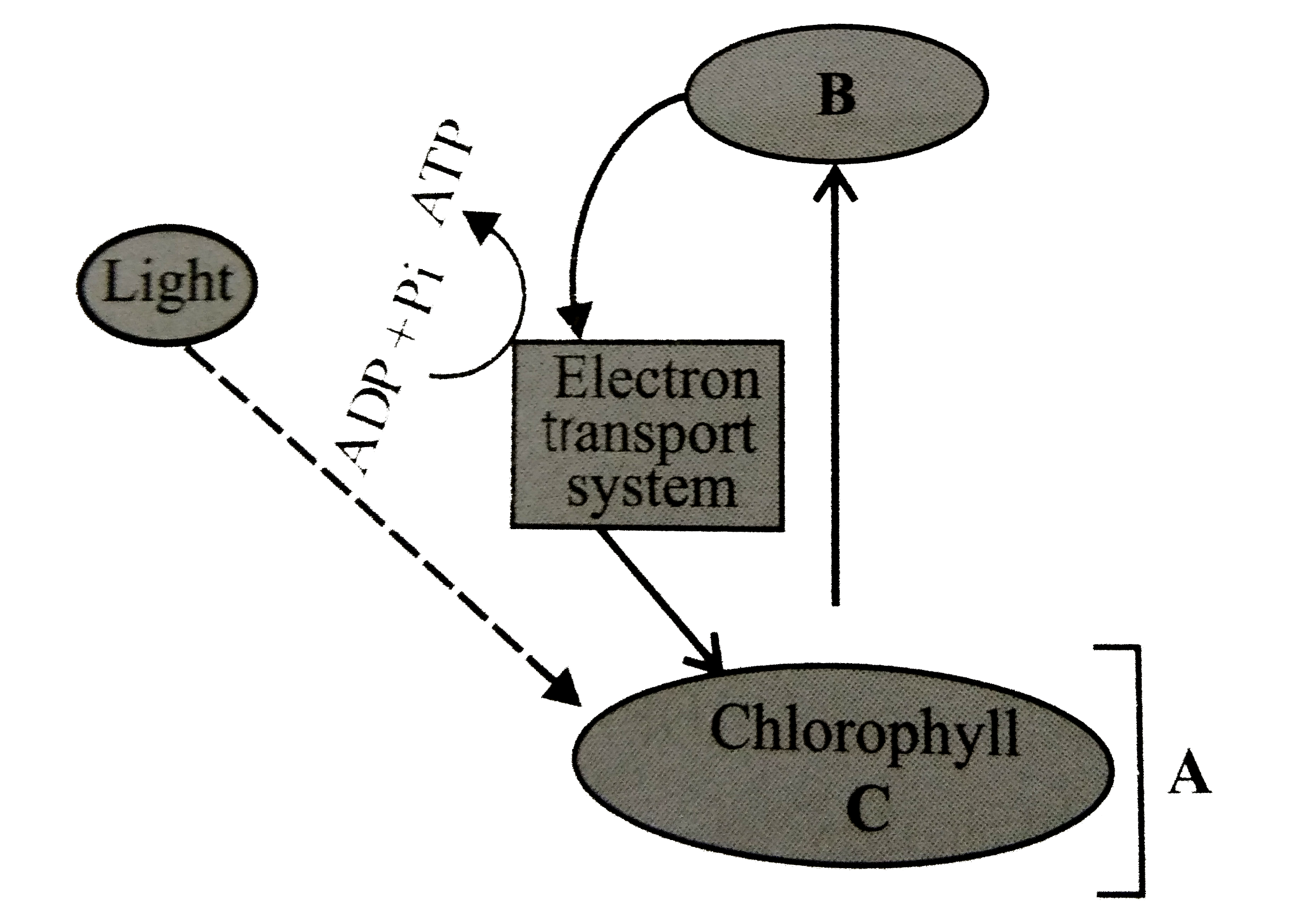Which of the given is/are not favourable factors(s) for cyclic photophosphorylation?
a. Low light intensity
b. Poor CO2 avallability
c. Aerobic condition
a and b
a and c
b and c
Only c
The correct Answer is:C
To determine which of the given options are not favorable factors for cyclic photophosphorylation, we will analyze each option step by step.
Step 1: Understand Cyclic Photophosphorylation
Cyclic photophosphorylation is a process that occurs in the light-dependent reactions of photosynthesis, primarily in plants. It involves the flow of electrons in a cycle, starting from Photosystem I (P700) and returning to it after passing through an electron transport chain. This process generates ATP but does not produce NADPH or oxygen.
Step 2: Analyze Option A - Low Light Intensity
Low light intensity can limit the amount of energy available for photosynthesis. However, cyclic photophosphorylation can still occur under low light conditions, albeit at a reduced rate. Therefore, low light intensity is not considered a favorable factor for optimal cyclic photophosphorylation.
Step 3: Analyze Option B - Poor CO2 Availability
Cyclic photophosphorylation can occur even when carbon dioxide (CO2) availability is low. In fact, lower CO2 levels can favor cyclic photophosphorylation as it allows for the recycling of electrons within the system without the need for carbon fixation. Thus, poor CO2 availability is not a favorable factor for this process.
Step 4: Analyze Option C - Aerobic Condition
Cyclic photophosphorylation is more favorable under anaerobic conditions. In aerobic conditions, the presence of oxygen can lead to the production of reactive oxygen species, which can inhibit the process. Therefore, aerobic conditions are not favorable for cyclic photophosphorylation.
Conclusion
Based on the analysis:
- Option A (Low light intensity): Not favorable
- Option B (Poor CO2 availability): Not favorable
- Option C (Aerobic condition): Not favorable
The correct answer is Option C as it is the most unfavorable factor for cyclic photophosphorylation.
Final Answer:
C. Aerobic condition is not a favorable factor for cyclic photophosphorylation.
---
Cyclic photophosphorylation is a process that occurs in the light-dependent reactions of photosynthesis, primarily in plants. It involves the flow of electrons in a cycle, starting from Photosystem I (P700) and returning to it after passing through an electron transport chain. This process generates ATP but does not produce NADPH or oxygen.
Low light intensity can limit the amount of energy available for photosynthesis. However, cyclic photophosphorylation can still occur under low light conditions, albeit at a reduced rate. Therefore, low light intensity is not considered a favorable factor for optimal cyclic photophosphorylation.
Cyclic photophosphorylation can occur even when carbon dioxide (CO2) availability is low. In fact, lower CO2 levels can favor cyclic photophosphorylation as it allows for the recycling of electrons within the system without the need for carbon fixation. Thus, poor CO2 availability is not a favorable factor for this process.
Cyclic photophosphorylation is more favorable under anaerobic conditions. In aerobic conditions, the presence of oxygen can lead to the production of reactive oxygen species, which can inhibit the process. Therefore, aerobic conditions are not favorable for cyclic photophosphorylation.
Based on the analysis:
- Option A (Low light intensity): Not favorable
- Option B (Poor CO2 availability): Not favorable
- Option C (Aerobic condition): Not favorable
C. Aerobic condition is not a favorable factor for cyclic photophosphorylation.
Topper's Solved these Questions
Similar Questions
Knowledge Check
Which of the following conditions are favourable for cyclic photophosphorylation
AAnaerobic conditionBAerobic and optimum lightCAerobic and low light intensityDAnaerobic and low light intensityStudy the given flow chart of cyclic photophosphorylation and selct the correct answer for A,B and C
 AABCPS Ie−acceptorP680BABCPS Ie^(-)aep→rP700CABCPS IICytochromeP700DABCPS IICytochromeP680
AABCPS Ie−acceptorP680BABCPS Ie^(-)aep→rP700CABCPS IICytochromeP700DABCPS IICytochromeP680Which of the following factor decides the choice of shelter?
A. Geography of area
B Environmental condition
C. Availability of raw material
D. Economic status of personAA, B and DBB, C and DCA, C and DDall of the above
Which of the following is a not a favourable condition for the formation of ionic bond
(A) Low charge on cation
(B) Larger size of cation
(C) High charge on anion
(D) Low IP of metal
View SolutionWhich of the following is a factor of the given number? 2 (b) 3 (c) 4 (d) 9
View SolutionRead the following four statements, A, B, C and D and select the right option having both correct statements.
Statements :
(A) Z scheme of light reaction takes place in present of PSI only.
(B) Only PSI is functional in cyclic photophosphorylation
(C) Cyclic photophosphorylation results into synthesis of ATPandNADPH2
(D) Stroma lamellae lack PSII as well as NADP Options:
View SolutionRead the following four statement A,B,C and D and select the right opition having both correct statements.
statements
(a) Z scheme of light raction takes place in presence of PS I only .
(B ) Omly PS I is functional in cyclic photosporylation
(c ) Cyclic photophosphorylation results into synthesis of ATP and NADPH2
(D ) Stroma lamllae lack PSII as welll as NADP
View SolutionWhich of the following factorss ar favorable for the formation of oxyhemoglobin ?
(a) High pO2, low pCO2
(b) Lesser H+ concentration, lower temperature
( c) Low pO2, high CO2
(d) High H+ , higher temperature
View Solution